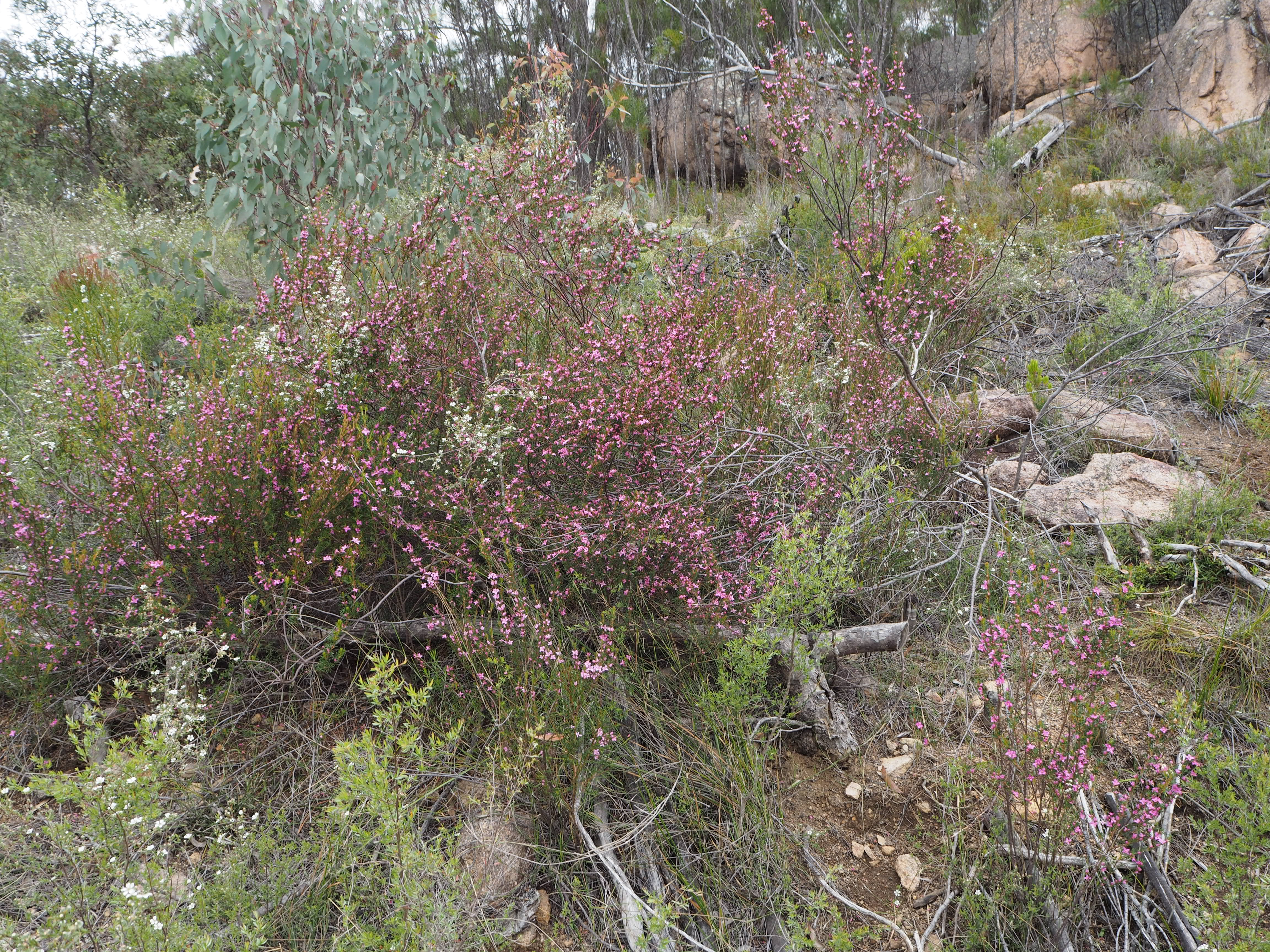Boronia Boliviensis on:
[Wikipedia]
[Google]
[Amazon]
''Boronia boliviensis'', commonly known as Bolivia Hill boronia is a plant in the citrus 
family
Family (from la, familia) is a group of people related either by consanguinity (by recognized birth) or affinity (by marriage or other relationship). The purpose of the family is to maintain the well-being of its members and of society. Idea ...
, Rutaceae
The Rutaceae is a family, commonly known as the rueRUTACEAE
in BoDD – Botanical Der ...
and is in BoDD – Botanical Der ...
endemic
Endemism is the state of a species being found in a single defined geographic location, such as an island, state, nation, country or other defined zone; organisms that are indigenous to a place are not endemic to it if they are also found else ...
to a small area on the Northern Tablelands
The Northern Tablelands, also known as the New England Tableland, is a plateau and a region of the Great Dividing Range in northern New South Wales, Australia. It includes the New England Range, the narrow highlands area of the New England regio ...
of New South Wales
)
, nickname =
, image_map = New South Wales in Australia.svg
, map_caption = Location of New South Wales in AustraliaCoordinates:
, subdivision_type = Country
, subdivision_name = Australia
, established_title = Before federation
, es ...
. It is a strongly scented shrub with pinnate leaves, deep pink flowers in spring and with its young branches covered with fine, yellow hairs. It is only known from higher parts of the Bolivia Range where it grows on granite
Granite () is a coarse-grained ( phaneritic) intrusive igneous rock composed mostly of quartz, alkali feldspar, and plagioclase. It forms from magma with a high content of silica and alkali metal oxides that slowly cools and solidifies under ...
outcrops.
Description
''Boronia boliviensis'' is an erect, strongly scented shrub with many branches and which grows to a height of between . The branches, when young are densely covered with fine, yellowish, branched hairs but becomeglabrous
Glabrousness (from the Latin '' glaber'' meaning "bald", "hairless", "shaved", "smooth") is the technical term for a lack of hair, down, setae, trichomes or other such covering. A glabrous surface may be a natural characteristic of all or part of ...
with age. Its leaves are dark green and bipinnate with between 5 and 9 leaflets. Each leaflet is narrow elliptic in shape, long and arranged on a jointed rachis
In biology, a rachis (from the grc, ῥάχις [], "backbone, spine") is a main axis or "shaft".
In zoology and microbiology
In vertebrates, ''rachis'' can refer to the series of articulated vertebrae, which encase the spinal cord. In this c ...
usually long and wide.
The flowers are borne singly or in groups of 3 in leaf axils on a branched peduncle long, with branches (pedicels
In botany, a pedicel is a stem that attaches a single flower to the inflorescence. Such inflorescences are described as ''pedicellate''.
Description
Pedicel refers to a structure connecting a single flower to its inflorescence. In the absenc ...
) long. There are 4 deep red, pointed sepal
A sepal () is a part of the flower of angiosperms (flowering plants). Usually green, sepals typically function as protection for the flower in bud, and often as support for the petals when in bloom., p. 106 The term ''sepalum'' was coine ...
lobes, each long and 4 deep pink petals long and wide. There are 8 curved stamens tipped with yellow anthers. Flowering occurs mainly from September to November but flowers are often present in other months.
Taxonomy and naming
''Boronia boliviensis'' was discovered in 1995 and first formally described by John Beaumont Williams and John Thomas Hunter in 2006 and the description was published in '' Telopea''. Thespecific epithet
In taxonomy, binomial nomenclature ("two-term naming system"), also called nomenclature ("two-name naming system") or binary nomenclature, is a formal system of naming species of living things by giving each a name composed of two parts, bot ...
(''boliviensis'') refers to the location Bolivia Hill, where all known specimens of the species have been found.
Distribution and habitat
This boronia is only known from the Bolivia Range south ofTenterfield
Tenterfield is a regional town in New South Wales, Australia. At the , Tenterfield had a population of 4,066. Tenterfield's proximity to many regional centres and its position on the route between Sydney and Brisbane led to its development as a ...
where it grows in forest or shrubland in thin soil over granite or between granite boulders, at altitudes between . It often occurs in association with ''Leucopogon neoanglicus
''Leucopogon'' is a genus of about 150-160 species of shrubs or small trees in the family Ericaceae, in the section of that family formerly treated as the separate family Epacridaceae. They are native to Australia, New Zealand, New Caledonia, th ...
'' and ''Micromyrtus sessilis
''Micromyrtus sessilis'' is a species of flowering plant in the myrtle family, Myrtaceae and is endemic to eastern Australia. It is a dense, spreading shrub with small, more or less linear leaves and flowers that are sometimes single in the uppe ...
''.
Conservation
''Boronia boliviensis'' is classified as "endangered" by the Scientific Committee, established by the Threatened Species Conservation Act (NSW). In 1999 the total population of mature plants was estimated to be 1,000.References
{{Taxonbar, from=Q15387712 boliviensis Flora of New South Wales Plants described in 2006